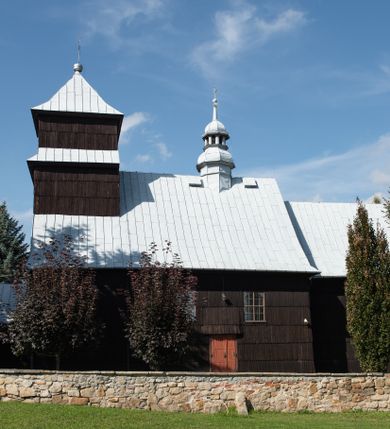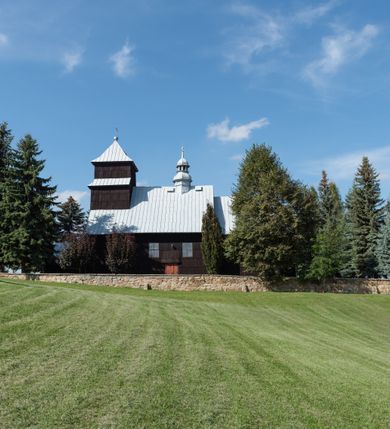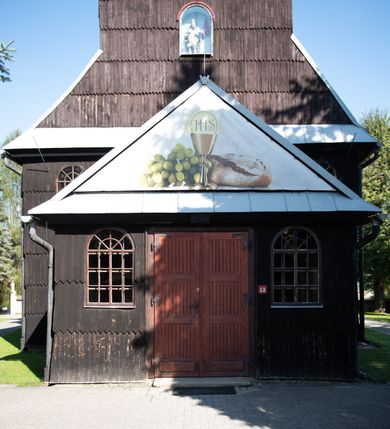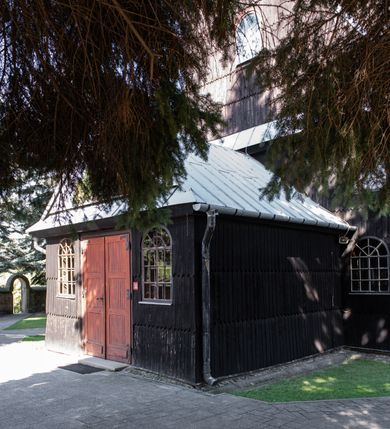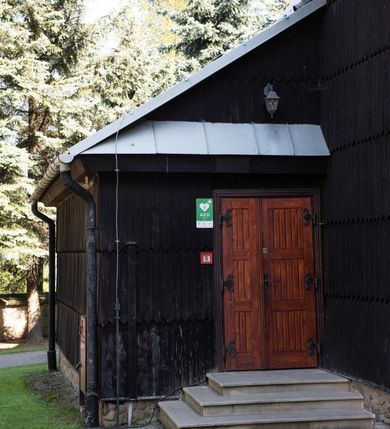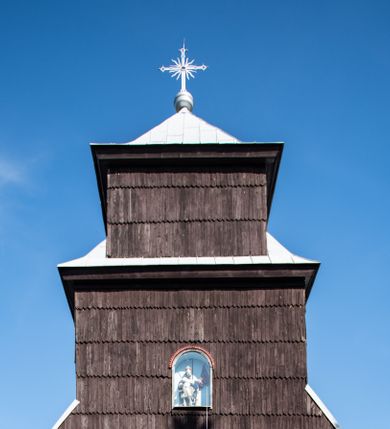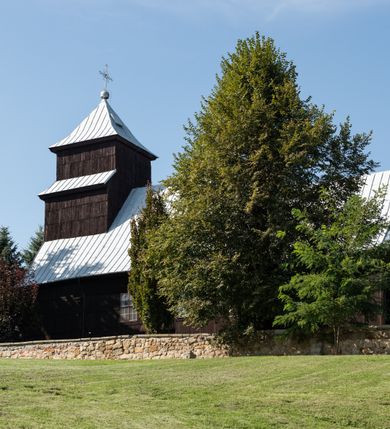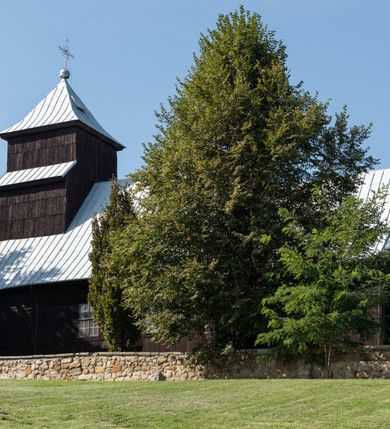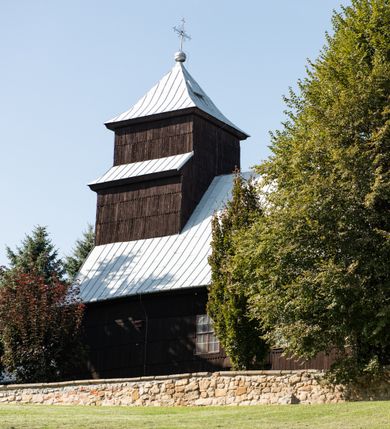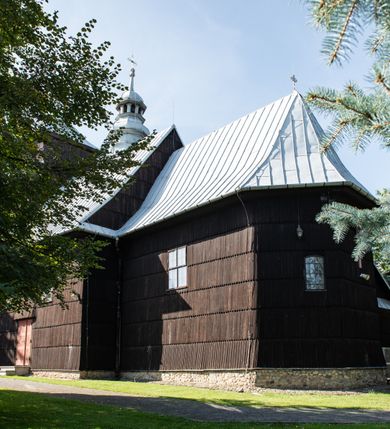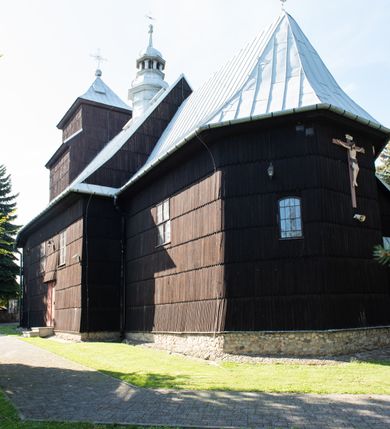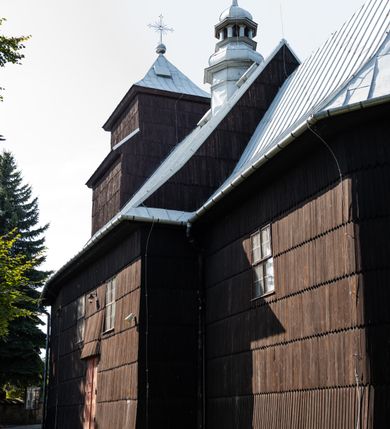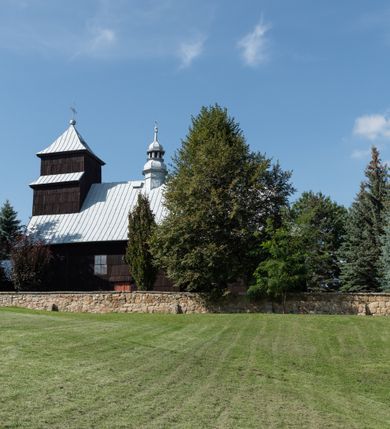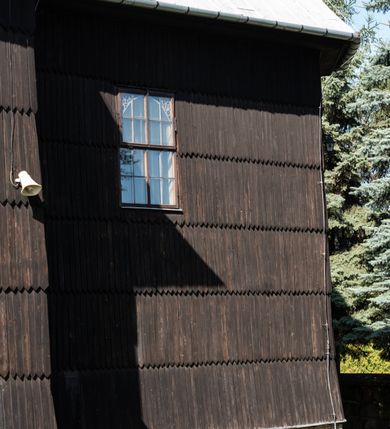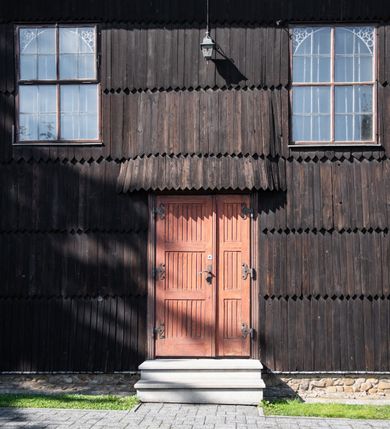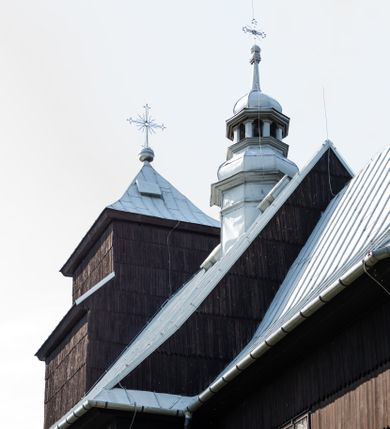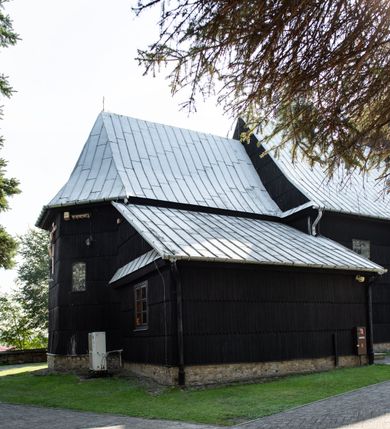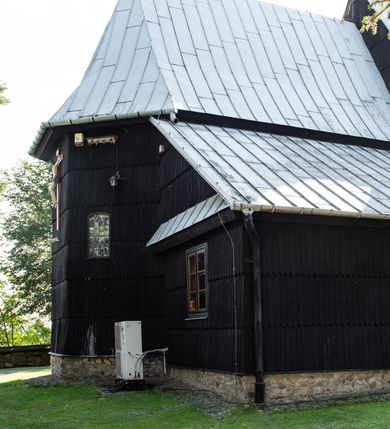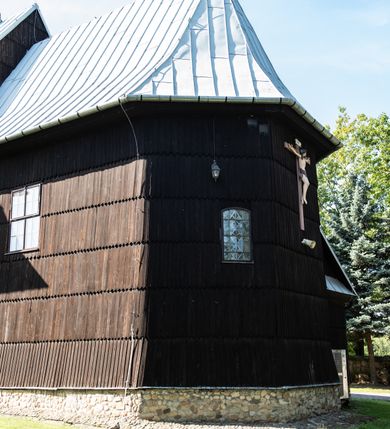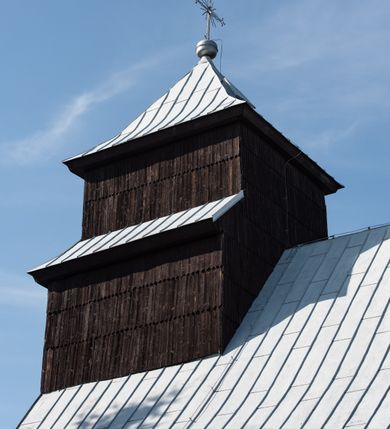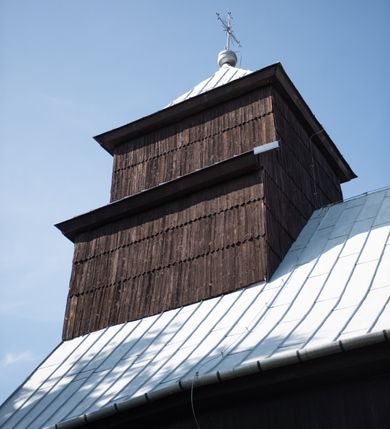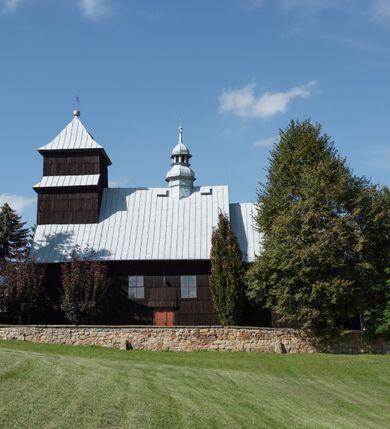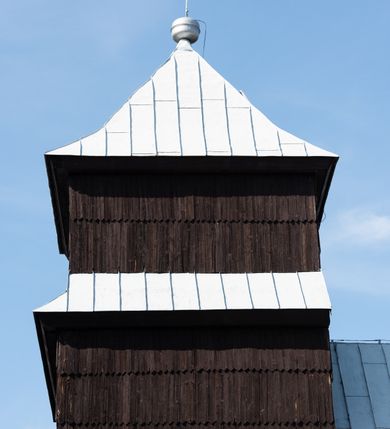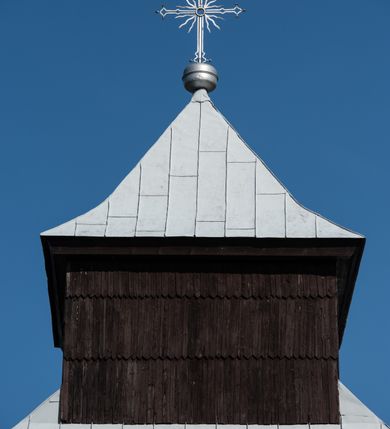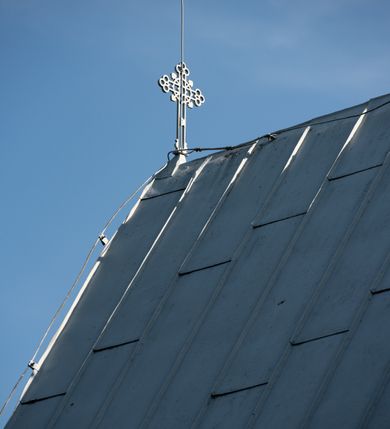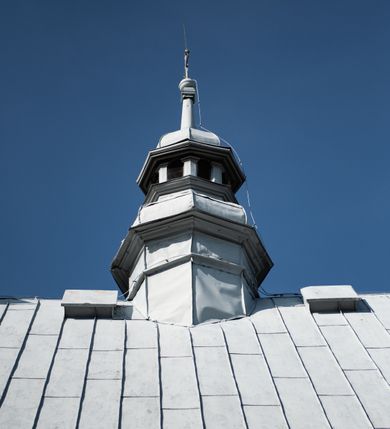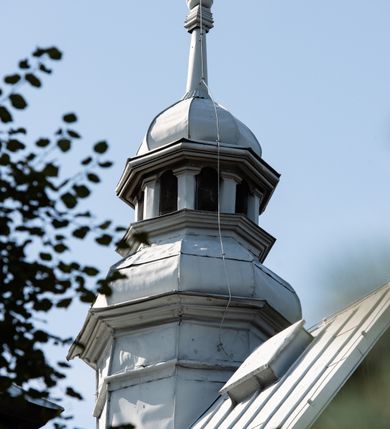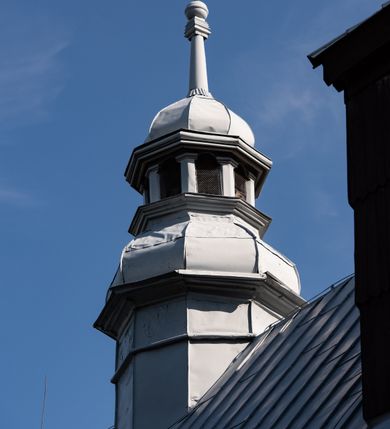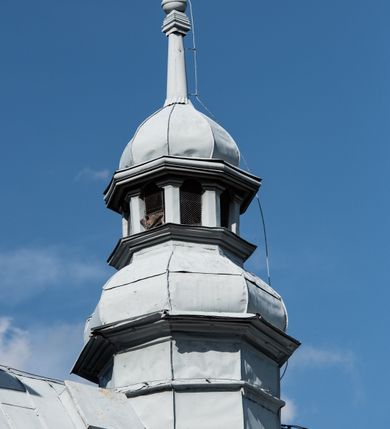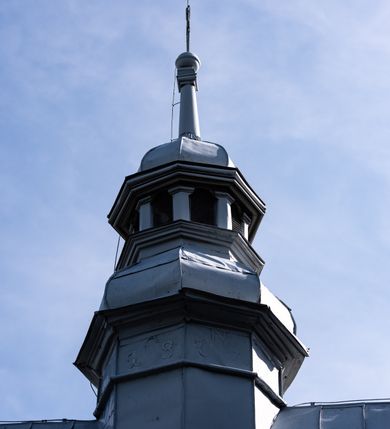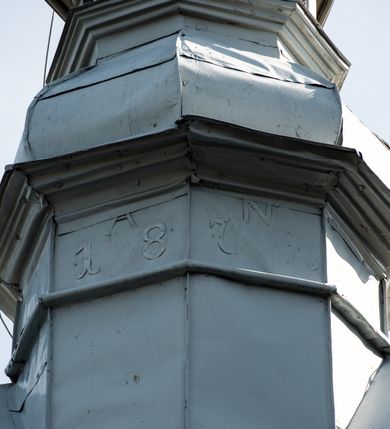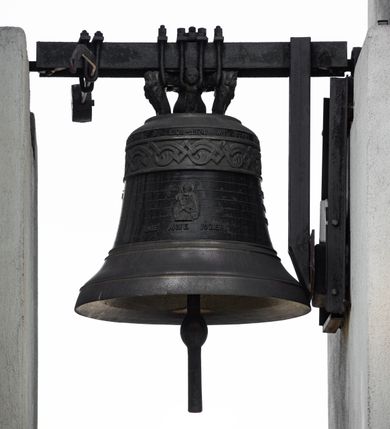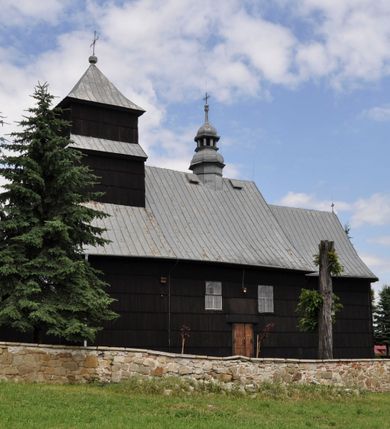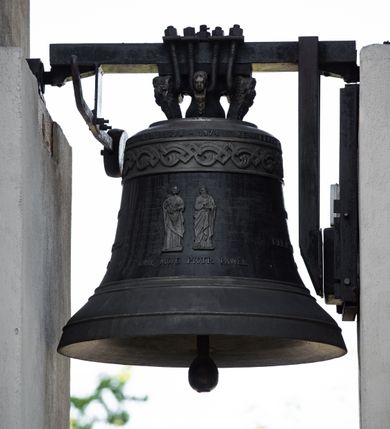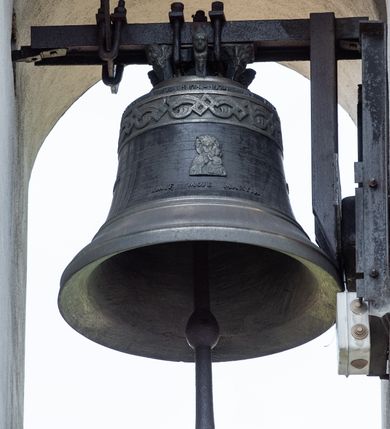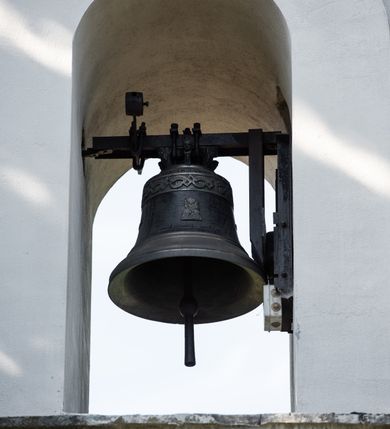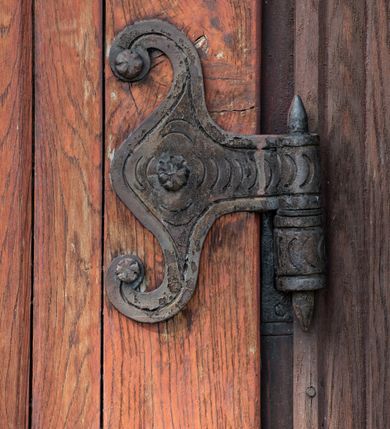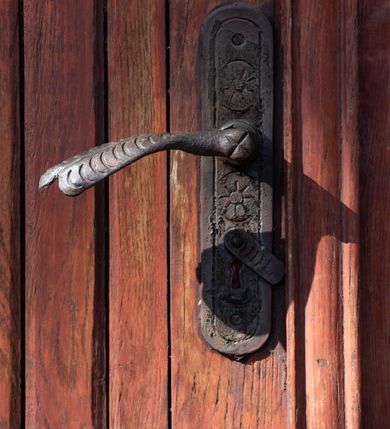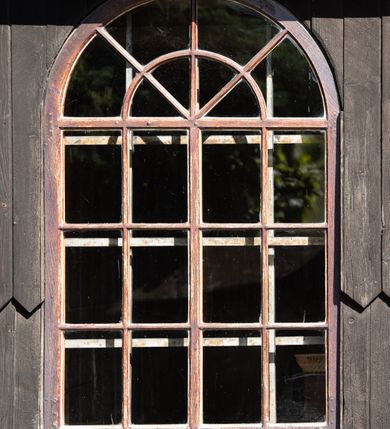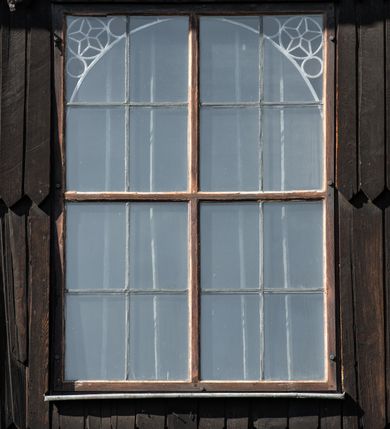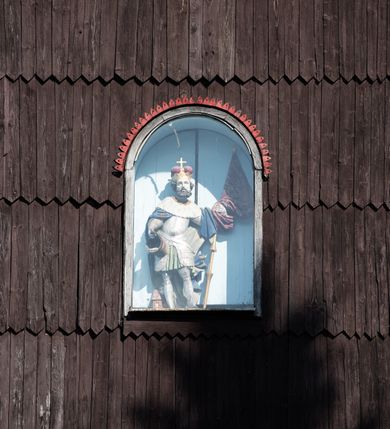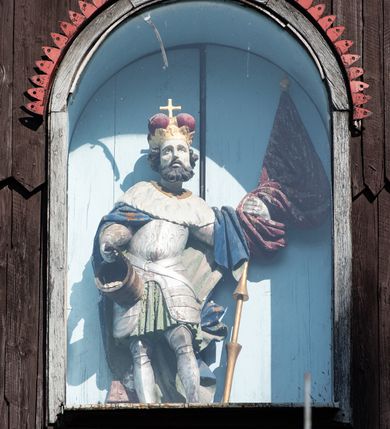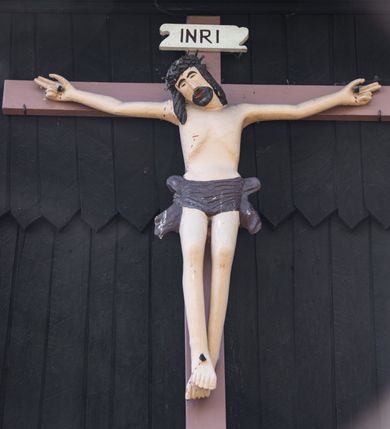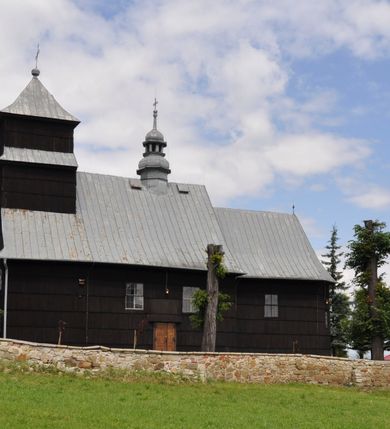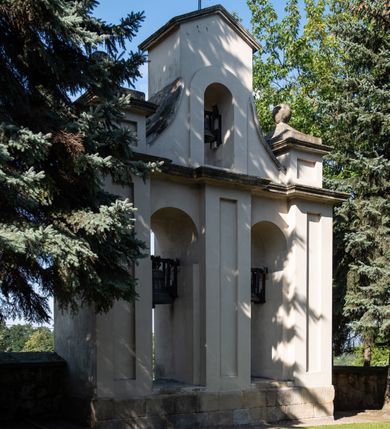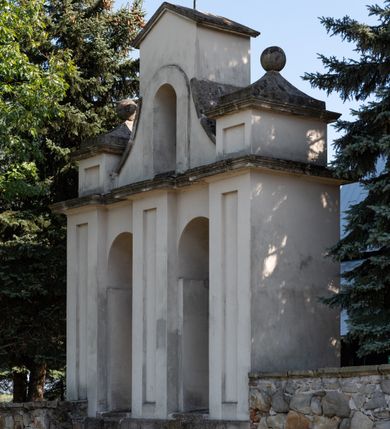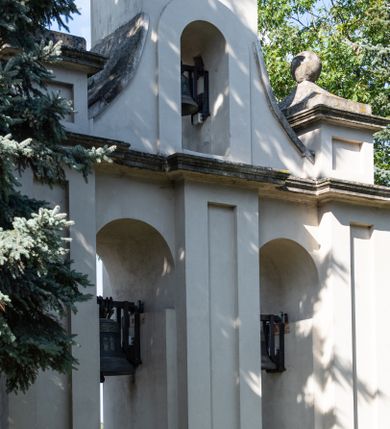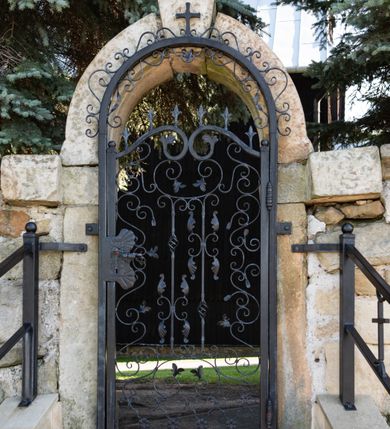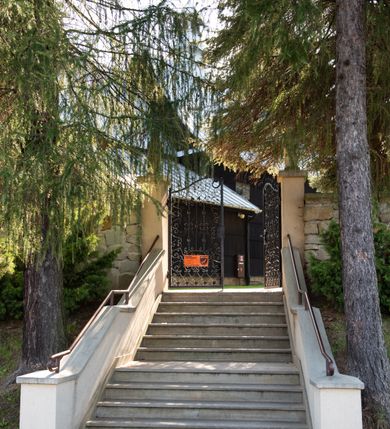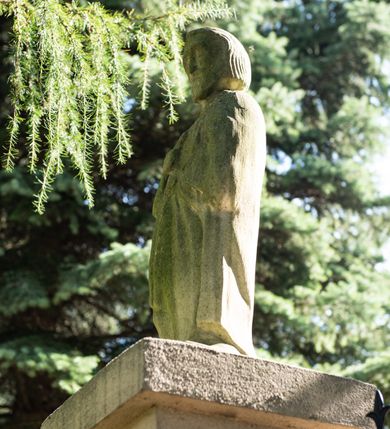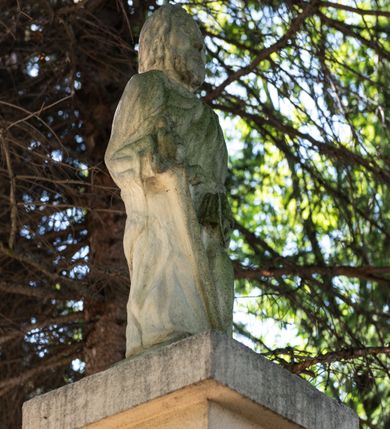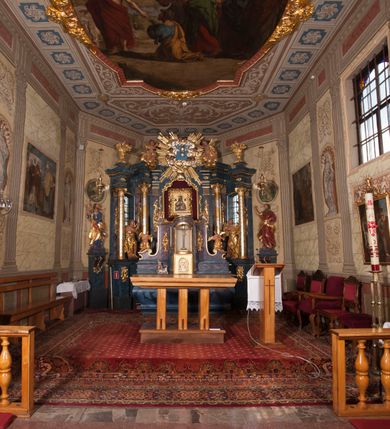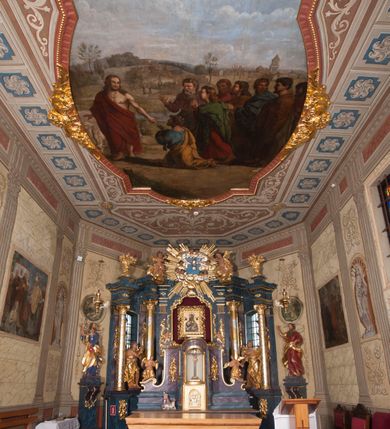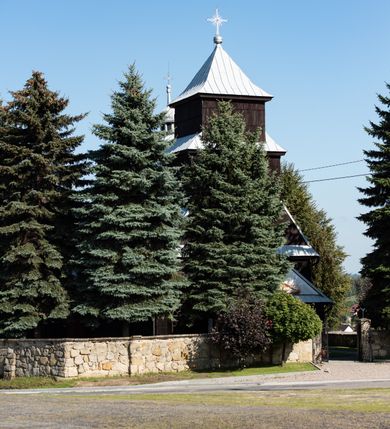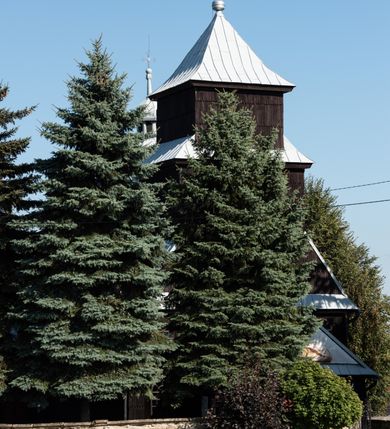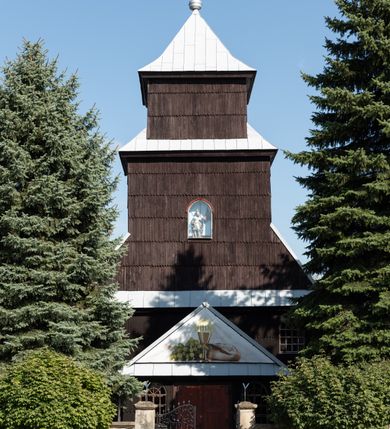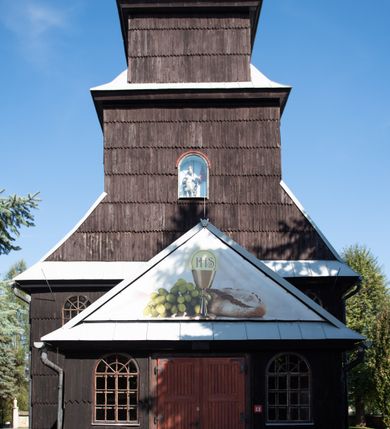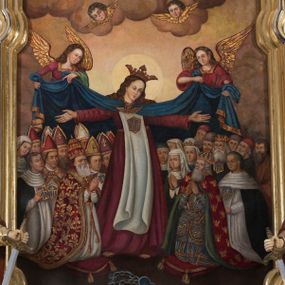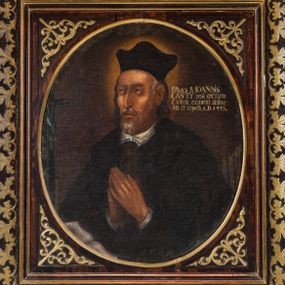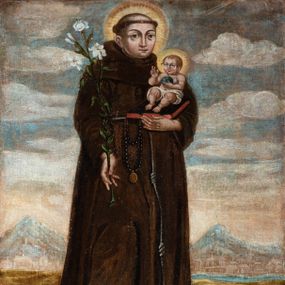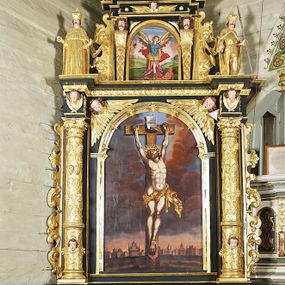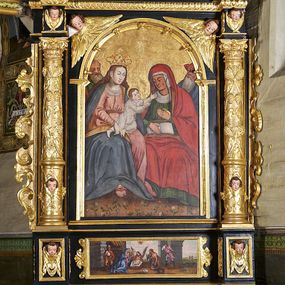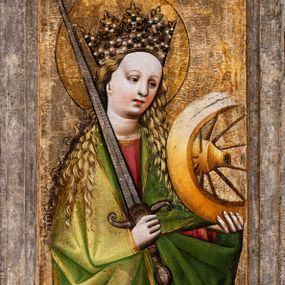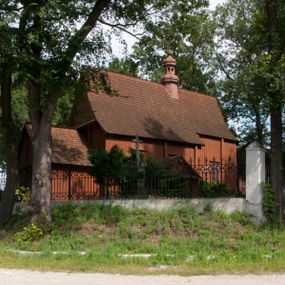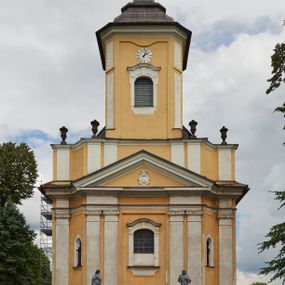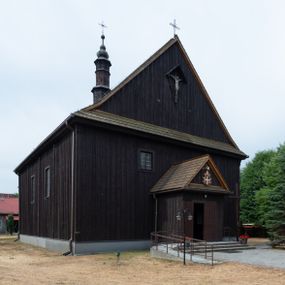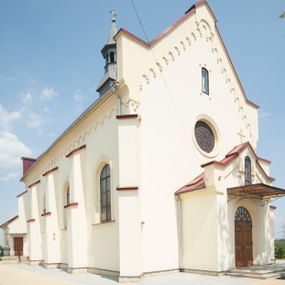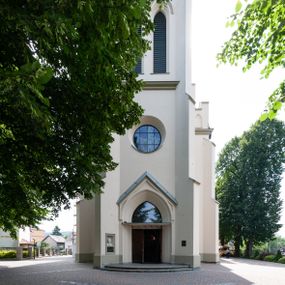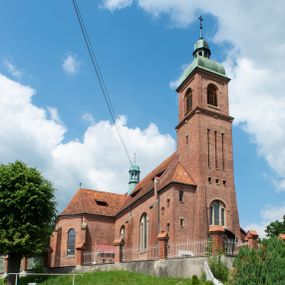
St. Peter and Paul the Apostles Church
Place
Bodzanów
Parish
Saint Peter's and Paul's parish in Bodzanów
Identifier
DZIELO/12366
Amount
1
Catalogue note author
Paulina Kluz
History of work
The parish in Bodzanów was erected before 1229. The foundation privilege of the church from 1281 has been preserved. In the visitation records from 1596, the church was described as a wooden church with a painted ceiling, with an image of the Crucified One on a chancel arch, and three altars. In subsequent visitation papers from 1629, it was indicated that the walls of the church had already been destroyed, especially the chancel wall. In 1663, the temple was close to ruin and needed a thorough renovation. Inside, there were three non-consecrated altars, perhaps erected some time earlier. The church was probably renovated thoroughly around 1690 during the ministry of parish priest Marcin Bochenkowski, as evidenced by the inscription found on the rafter during the roof renovation in 1881 - "M(artinus) B(Ochenkowski) P(arochus) B(odzanoviensis) 1691". (an event described in the chronicle by Father Augustyn Nowicki). In 1866, an altar stone from that period was also found, one featuring inscriptions: "M(artinus) S(tanislaus) B(ochenkowski) / Ph(ilosophiae) B(accalaureus) / D(ecanus) W(ielicensis) P(arochus) B(odzanoviensis)" and "Anna D[omi]ni 1690 die 27 Junii". The renovated church building was described in the visitation papers of 1703 as a wooden, simple work, covered with shingles, with a porch facing the west (it had no tower), with a ridge turret. In the church there was an organ loft with a seven-tone organ and three altars - the main altar of St. Peter and St. Paul and two side altars - the ones of St. Anthony and the Blessed Virgin Mary. In the visitation papers of 1714 it was indicated, that the church was in a very bad condition ("looks like a robber's cave"). In addition to the three mentioned above, the fourth altar, St. Nicholas' altar, was also mentioned. In subsequent visitation papers of 1748, the condition of the church was described as being fit only for demolishing ("it does not require repairs now, but to be constructed and raised anew"), and the detached bell tower was described as completely destroyed. The temple in Bodzanów was rebuilt thoroughly after 1765, during parish priest Walentyn Grodzki's years of ministration (1765-1785). He found the church "in a miserable state". As indicated in the chronicle, his parents did a lot for the church, so perhaps they financed its renovation and construction of new equipment (1769-1771). During this renovation, a tower was added to the body of the church. In the second quarter of the 19th century, the church was in need of urgent renovation, although the parish priest did not manage to obtain the support and consent of the then collator - W. Chroszczewski. Only when Józef Wojciechowski became the heir of Bodzanów and the benefactor of the church was the temple's renovation undertaken by the order of the Circular Office. Due to this, in May and June 1845 "one part of the church was covered with a new roof and the bell towers were repaired". Then, still during the years of ministry of the parish priest Leon Czerniecki, a new bell tower was built (1835-1863). In 1863 a fire broke out in the manor house, which spread to the church, although the rapid intervention of the inhabitants, as well as weather conditions (rain), allowed to extinguish the fire quickly. In the same year "5 m2 of stone floor was given to the church, two collapsing altars were moved, a hole was made in the sill, a new organ player's house was built and many other small repairs in the church and parsonage were made - out of voluntary contribution amounting to 437 forints". In 1864, the "sill in the chancel and boarding of the bell tower (arranged officially for 280 forints)" were made. In 1865, the parish priest built a "hoarding made of stone from Dobrzyca" using the contributions collected earlier. "Lord-heir Bogumił Nowak undertook to arrange for an iron gate, but because it was expensive, he arranged a wooden door instead" and "a stone path to the church for 9 forints and an entrance gate facing the church for 20 forints are of this year as well". In 1870, the "church dome" (cupola) was covered with zinc sheet. In 1876, "a new entrance to the organ loft was made through the tower - the space in the tower behind the organ loft was formworked and arranged [...] besides that, the church will be made more spacious by getting rid of the old stairs". In the same year, the parishioners started collecting contributions for a new organ loft and organ. They were made a year later at the cost of 1000 forints, and were made by "Mr. Ant(oni) Sapalski, Organ builder from Cracow". On St. Peter's Day it was consecrated by Father Ludwik Nawarra, parish priest of Łazan. In 1878, the parishioners arranged a stone floor in the nave of the church at their own expense. Thanks to the effort of the parish priest, painter Szymon Broniszewski from Baczków, with the help of J. Jachim from Momizoga, painted the doors and windows in the sacristy. A part of the wall around the church was also completed, whereas "the stone was brought for free from Dobczyce and Droginia". In 1881, the church was covered with new shingles, which were brought from Rzegocin. A year later, carpenter Szymon Broniszewski from Baczków, together with sculptor Antoni Broniszewski, made a "sill in the nave of the church" (soffit, plank underlay nailed to the ceiling or a net to maintain the plaster). In the following year Antoni Broniszewski made frames with sculptural decoration suspended on the soffit in the nave and chancel (plafonds) at the cost of 80 forints. In November of that year, the painting "Sermon of St. Paul in Athens", made by Ferdinand Olesiński, was brought, which was mounted in the plafond above the nave, and a year later, the painting "Delivery of the keys to St. Peter" by the same author, was mounted in the plafond above the chancel. The paintings cost 500 forints in total. In 1886, on the initiative of the new parish priest - Wojciech Szczurkowski, painter Alojzy Pazdanowski from Nowy Sącz painted the church for 725 forints (illusionist architecture of walls and ceiling). Following that, with the permission of the Church Committee, the parish priest ordered "to cut out two windows in the nave in the northern wall, to glaze them, and to dress them, as well as those behind the large altar windows, with colored glass, which shall be done by the local parishioner, famous for his natural skill in soldering, a certain Jędrzej Ziobro from Zakrzew". In 1911, the western porch was added to the church, and the whole temple was covered with shingles. In 1920, three bells were brought to the church "from the storehouse of Mr. Felczynski in Krosno", three windows in the church were glazed and a new ridge turret was built.
After World War II, in 1947, the parishioners came up with the idea of building a new church, which, in the end, was not realized. In 1954, Mieczysław Reguła, together with his father, Romuald, made a new polychrome in the chancel. The sacristy and the porch were also painted. In 1957, the church was electrified. In 1965, the sacristy was renovated. At the end of the 1960s, "the church was in a very poor condition [...]. Inclined to the north side along with the tower, it was structurally unsound. The roof of the church is destroyed." In 1969, the Metropolitan Curia commissioned Father Józef Kurowski, the vicar at the time, to carry out renovation and conservation works in the church. After obtaining official approvals, the renovation started in 1971 under the supervision of engineer Lucjan Zębal. In the first year of the renovation, rotten beams and mouldy walls were replaced. In the following year, ring and floor beams, all windows and doors as well as the stairs (the ones leading to the loft and pulpit) were replaced. A new electrical and loudspeaker system was installed. A whole new sacristy was built. Following that, in 1973, the roof framework was replaced, the roof as well as the ridge turret were covered with sheet metal, and gutters were installed. Underfloor heating, designed by M. Jasiński, was installed underneath the floor. A new mosaic floor was laid in the church and vestibule, and sandstone slabs were laid in the sacristy. Under the loft, an opening was cut in place of the door and pillars supporting the loft were moved to the side. The church was covered with shingles and wooden elements were preserved. Painter Karol Pustelnik renovated the polychrome of the church. A new sidewalk was laid around the temple. In 1974, three new bells were made: Józef, Piotr and Paweł, Maria "cast in Przemyśl by bell founder J(an) Felczyński". In the following year, "local carpenter Tadeusz Klima from Zakrzew" made a new balustrade for receiving the Holy Communion and new furniture was arranged for the sacristy, one "made by local carpenters". In 1981, the sheet metal on the church was painted and new chandeliers (spiders) were arranged for the interior.
Abstract
The church's privilege of erection dates back to 1281. The church was built in the 16th century. Probably around 1690, during Marcin Bochenkowski's years of ministration, a thorough renovation of the building was carried out due to the risk of structural collapse. Subsequently, the temple in Bodzanów was rebuilt after 1765, during Walentyn Grodzki's years of ministration (1765-1785). At that time, it received its (preserved until today) body, and a tower added to the structure. The last major renovation of the church took place in 1971-1973. At that time, most of the structural and load-bearing elements of the temple and its overlaying were replaced. The church in Bodzanów refers to traditional solution, i.e. a single-nave building with a wider nave and a narrower chancel. However, its body has the characteristics of the 18th century.
Other works from this place
Similar works
How to cite?
Paulina Kluz, "St. Peter and Paul the Apostles Church", [in:] "The Sacred Lesser Poland Heritage", 2026, source: https://sdm.upjp2.edu.pl/en/works/st-peter-and-paul-the-apostles-church
